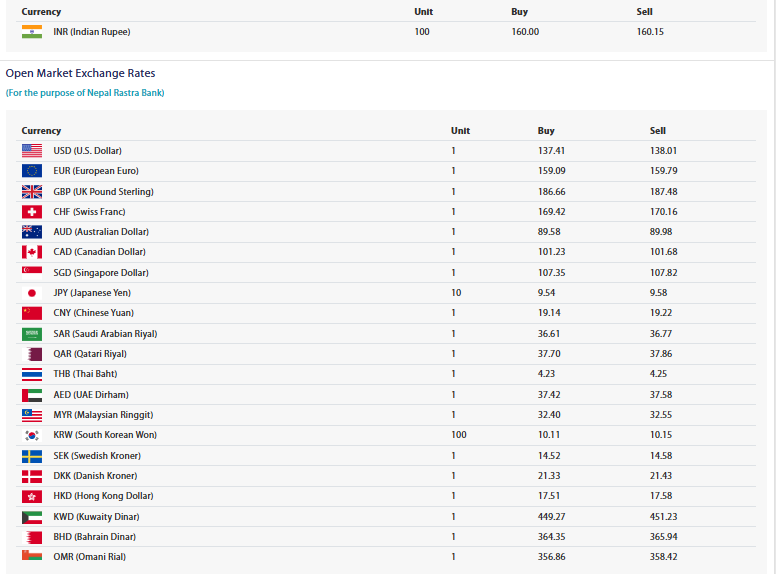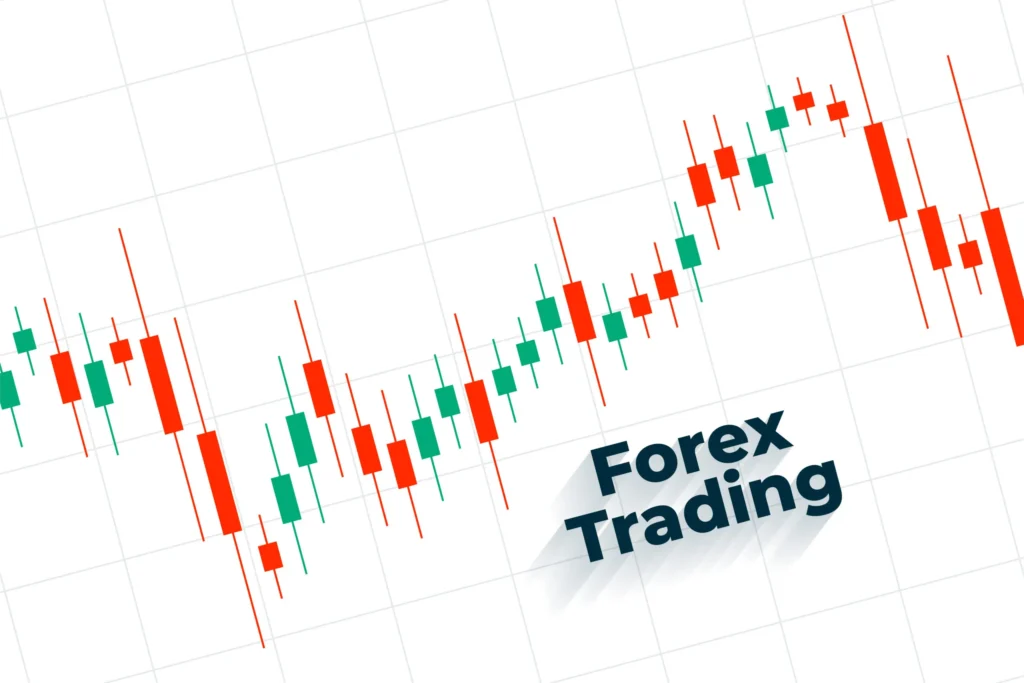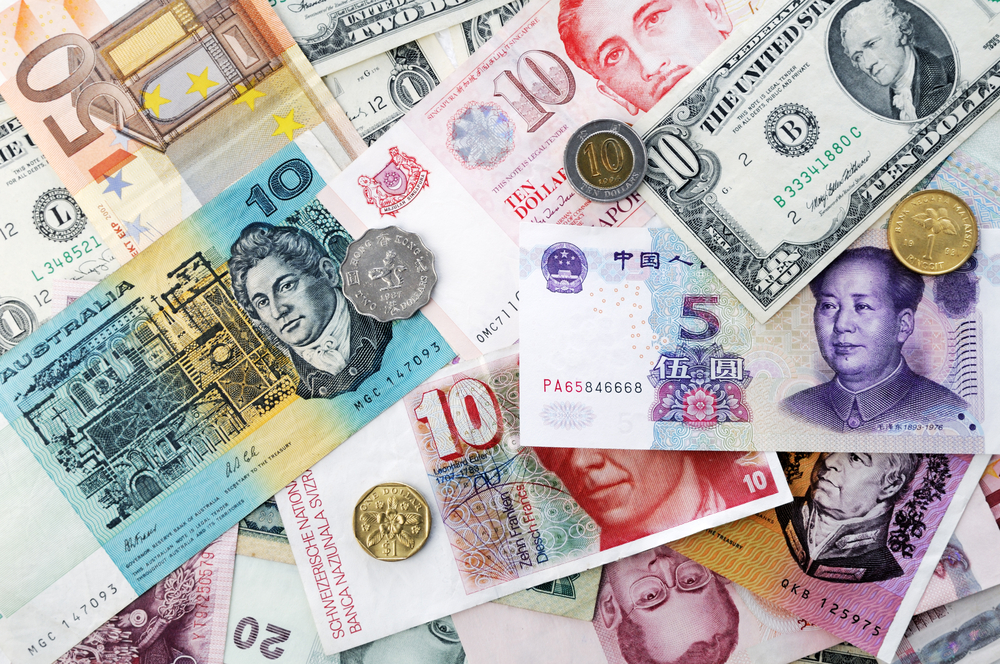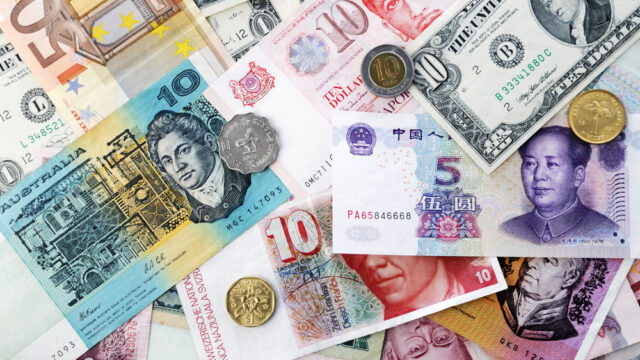The Nepal Rastra Bank (NRB) has officially released the foreign currency exchange rates for today, highlighting updates on major international currencies and their current buying and selling rates in Nepal. These rates play a vital role in shaping import-export business decisions, foreign remittance evaluations, and international financial planning across various sectors.
U.S. Dollar Maintains Strong Position
As per NRB’s official rate sheet, the U.S. Dollar (USD) remains a dominant foreign currency in the Nepali market. The buying rate for one U.S. dollar has been fixed at Rs. 137.41, while the selling rate stands at Rs. 138.01. The continued demand for USD in remittance, trade, and tourism contributes to its strong presence in Nepal’s forex market. This rate affects several financial aspects, especially for individuals or institutions dealing in imports, international education payments, and foreign investments.

European and British Currencies Witness Moderate Activity
Among European currencies, the Euro (EUR) is trading with a buying rate of Rs. 159.09 and a selling rate of Rs. 159.79. Meanwhile, the British Pound Sterling (GBP) is marked at Rs. 186.66 for buying and Rs. 187.48 for selling, reflecting its position as one of the higher-valued currencies in the global market.
The Swiss Franc (CHF) also maintains a solid exchange position, with its buying rate at Rs. 169.42 and the selling rate at Rs. 170.16. These European currencies play a significant role for Nepalis involved in trade and travel across Europe.
Oceania Currencies: Australian and Canadian Dollars
From the Oceania region, the Australian Dollar (AUD) is currently trading with a buying rate of Rs. 89.58 and a selling rate of Rs. 89.98. Similarly, the Canadian Dollar (CAD) stands at Rs. 101.23 (buying) and Rs. 101.68 (selling). These currencies are notably relevant for Nepali students studying abroad and migrants working in these countries.
Steady Exchange for Asian Currencies
The Singapore Dollar (SGD) has a buying rate of Rs. 107.35 and a selling rate of Rs. 107.82, reflecting its stable value in Asia. The Japanese Yen (JPY), calculated per 10 units, is listed at Rs. 9.54 (buying) and Rs. 9.58 (selling). The Chinese Yuan (CNY) stands at Rs. 19.14 and Rs. 19.22, indicating growing trade ties between Nepal and China.

The Saudi Riyal (SAR) has been valued at Rs. 36.61 (buying) and Rs. 36.77 (selling), while the Qatari Riyal (QAR) is marked at Rs. 37.70 and Rs. 37.86. These currencies are particularly important for the large Nepali workforce in Gulf nations who regularly send remittances back home.
Regional Currency Highlights
The Thai Baht (THB) is trading at Rs. 4.23 (buying) and Rs. 4.25 (selling), while the UAE Dirham (AED) is valued at Rs. 37.42 and Rs. 37.58. The Malaysian Ringgit (MYR) is being exchanged at Rs. 32.40 (buying) and Rs. 32.55 (selling). The South Korean Won (KRW), calculated per 100 units, is at Rs. 10.11 (buying) and Rs. 10.15 (selling). These currencies are especially important for tourism exchanges and the growing interest in trade with East and Southeast Asian economies.
Nordic and Middle Eastern Currency Overview
Among Nordic currencies, the Swedish Kroner (SEK) is valued at Rs. 14.52 (buying) and Rs. 14.58 (selling), while the Danish Kroner (DKK) has a buying rate of Rs. 21.33 and a selling rate of Rs. 21.43. In the Middle Eastern region, the Hong Kong Dollar (HKD) is trading at Rs. 17.51 (buying) and Rs. 17.58 (selling). The Kuwaiti Dinar (KWD) is among the highest-valued currencies today, with a buying rate of Rs. 449.27 and a selling rate of Rs. 451.23. Similarly, the Bahraini Dinar (BHD) is fixed at Rs. 364.35 (buying) and Rs. 365.94 (selling), and the Omani Riyal (OMR) is listed at Rs. 356.86 for buying and Rs. 358.42 for selling.
Indian Rupee and Its Significance
Nepal’s close economic integration with India is reflected in the consistent tracking of the Indian Rupee (INR) exchange. For today, the NRB has set the rate for 100 Indian rupees at Rs. 160 (buying) and Rs. 160.15 (selling). This rate is crucial for border trade, tourism, and general transactions in several parts of Nepal. The exchange rate with the Indian currency often remains stable due to the fixed pegging mechanism maintained by the Nepal Rastra Bank.

Central Bank’s Flexibility in Rate Adjustment
The Nepal Rastra Bank has stated that these exchange rates are subject to revision as per economic requirements. The central bank reserves the right to adjust the rates at any time based on foreign currency demand, international market movements, and domestic fiscal priorities.
It has also clarified that the actual exchange rates offered by commercial banks may vary slightly from the central rates due to operational factors. For the most accurate and updated exchange values, individuals and businesses are encouraged to check the official NRB website or consult with authorized commercial banks directly.
Foreign exchange rates are not just figures, they influence everyday life, from remittance flows to international trade and travel. The Nepal Rastra Bank’s daily updates play a pivotal role in maintaining monetary stability and economic transparency. As global currency values continue to shift in response to international developments, NRB’s timely data empowers citizens, businesses, and policymakers to make informed financial decisions.






